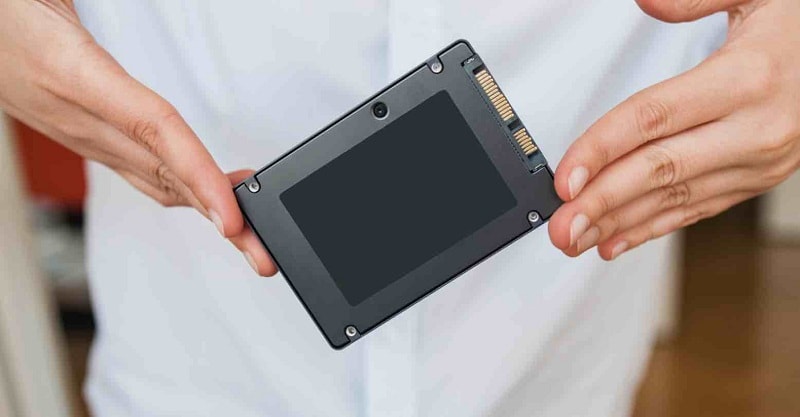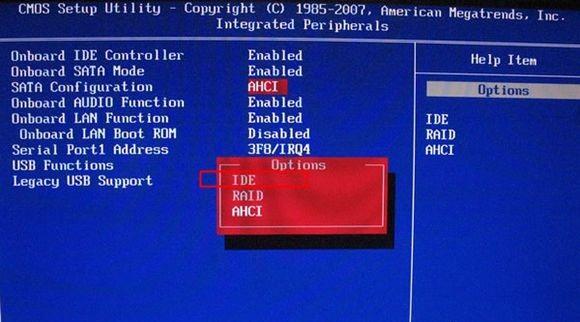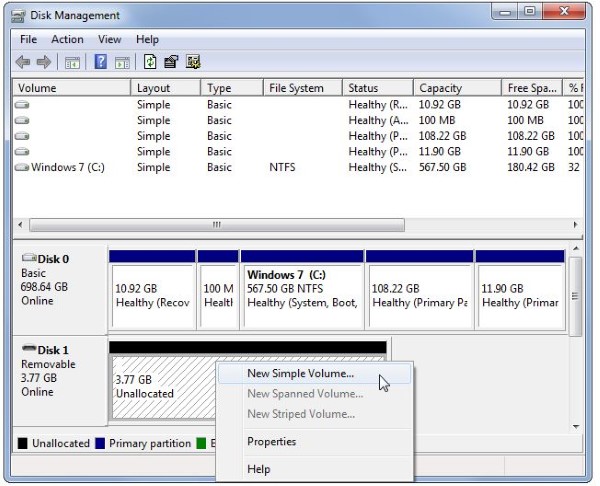What causes SSD hard drive not to be recognized? How to fix it?
The error of SSD hard drive not being recognized can occur when your computer has been used for a long time. When encountering that case, you do not know how to handle it? The article below will give specific instructions on how to fix the error of SSD hard drive not being recognized in the most effective way.
Causes of SSD hard drive not recognized error on laptop
The most common cause of SSD failure is that while using, you accidentally drop the computer or hit it hard with another object, causing the read and write head to loosen or be damaged and even affect other internal components. At this time, there is a high risk that your data may be lost.

Another reason may be that your laptop has been used for a long time, and its components are too old. Factors such as environmental humidity and dust have damaged the hard drive reader, causing laptop hard drive errors. And the consequence is that the SSD hard drive is not recognized, hindering your work.
Your computer is used frequently but is not equipped with a heat sink, which will cause the hard drive to always be in a state of high temperature. This will melt plastic or rubber cables, . or more dangerously, burn the Board and Chip, causing the SSD hard drive to fail.
How to fix SSD hard drive not recognized error
Verify BIOS detects high speed SSD
BIOS is the application that operates the laptop. Before starting with the possible fixes, it is necessary to ensure that the SSD is connected correctly and then detected by the BIOS (Basic Input/Output System). It also controls the necessary tasks between Windows and various attached devices.
To open the BIOS menu on your computer, press a function key while the computer is running. The specific key required may vary depending on the manufacturer.
In the BIOS menu, look for the Boot menu and then check again if the SSD is slow and installed there. If the SSD is installed in your home, you can continue to try the other solutions mentioned. If the BIOS menu does not recognize the SSD, you may have a hardware problem or need to reconfigure the SATA controller in the BIOS menu.
New SSD hard drive installation configuration
SATA controller is the hardware interface that connects the motherboard to the hard drive. If the BIOS does not detect the high-speed ssd hard drive, you can try changing the SATA controller mode.
BIOS menus will vary from manufacturer to manufacturer, so try looking for similar new settings in your manufacturer-specific BIOS menu.

To configure SATA controller settings:
Step 1: Restart the computer then enter the BIOS menu by clicking the appropriate function key.
B2: Select Storage Options > Serial ATA > SATA Configuration or a similar setting.
Step 3: Select IDE Compatibility Mode.
B4: Save the changes then restart your PC.
Your BIOS should now recognize the ssd and you should be able to start using it after booting windows 10.
SSD Not Initialized
When you have a new SSD, you need to initialize it to use it in Win 10 operating system. An uninitialized SSD will not show up in File Explorer or Disk Management utility.
If you haven't initialized your SSD yet, you can follow a few steps:
Step 1: Search for Disk Management in the Start menu search bar, right-click on the most suitable result and select Run as administrator.

B2: Right-click on the undetected SSD and select Initialize Disk.
B3: In the Initialize Disk dialog box, select the SSD you want to initialize and select the partition type.
B4: Click OK to start the drive initialization process.
B5: After completing step 4, return to Disk Management, right-click on the SSD volume and select New Simple Volume.
B6: Follow the on-screen instructions to assign the SSD volume and drive letter.
After initializing the SSD, you should restart your PC so that the changes can take effect properly. After restarting, Windows 10 will detect the SSD and you can access it through File Explorer.
Update memory device controller driver
Before moving on to the fixes, you need to update your memory controller driver. Outdated drivers can cause the device to not function properly and lead to why Windows does not detect the SSD.
To update the memory controller driver, follow these steps:
Step 1: Launch Device Manager from the Start menu.
B2: Search for Storage controllers and expand the group.

B3: Right-click on the memory device controller and select Update driver.
Step 4: Select Search automatically for updated driver software.
Windows will automatically install any available updates; you can then restart your PC and open File Explorer or the Disk Management tool to check if Windows 10 now detects the SSD.
Troubleshoot memory issues
Windows internal memory issues can also cause SSDs to not be recognized. The built-in Windows Memory Diagnostic can detect and fix RAM and hard drive failures. Here's how to run the tool:
Step 1: Type 'Windows Memory Diagnostic' in the Search box, right-click on the result > Run as administrator.
Step 2: Save unsaved work and select Restart now and check for problems.
The computer will restart and perform hardware diagnostic tests automatically. This test will take a few minutes to complete, once completed the computer will automatically restart and display the test results.
Conclude
Hopefully through the methods given in the article, you can quickly and effectively fix the error of not recognizing the SSD hard drive. And you should back up data to many other storage devices to avoid possible data loss. Wish you success!
You should read it
- How to identify hard drive failure, hard drive failure, bad hard drive on Windows
- 5 hard drives with the best reliability
- How to fix portable hard drive not recognized when connected to computer
- What is a hard drive? There are several types?
- Dissection of hard drive components
- How to regain access to the hard drive, fix errors that cannot open the hard drive
 What is a blue switch mechanical keyboard? Comparison of mechanical and imitation mechanical keyboards
What is a blue switch mechanical keyboard? Comparison of mechanical and imitation mechanical keyboards Which mechanical keyboard switch should I buy? How to choose a switch for each user
Which mechanical keyboard switch should I buy? How to choose a switch for each user What is the cause of mechanical keyboard paralysis and how to fix it?
What is the cause of mechanical keyboard paralysis and how to fix it? What is a cherry switch mechanical keyboard? The most popular types of cherry switches
What is a cherry switch mechanical keyboard? The most popular types of cherry switches TOP 5 best wireless mechanical keyboards for super comfortable typing
TOP 5 best wireless mechanical keyboards for super comfortable typing Top 5 hottest Logitech mechanical keyboards today
Top 5 hottest Logitech mechanical keyboards today